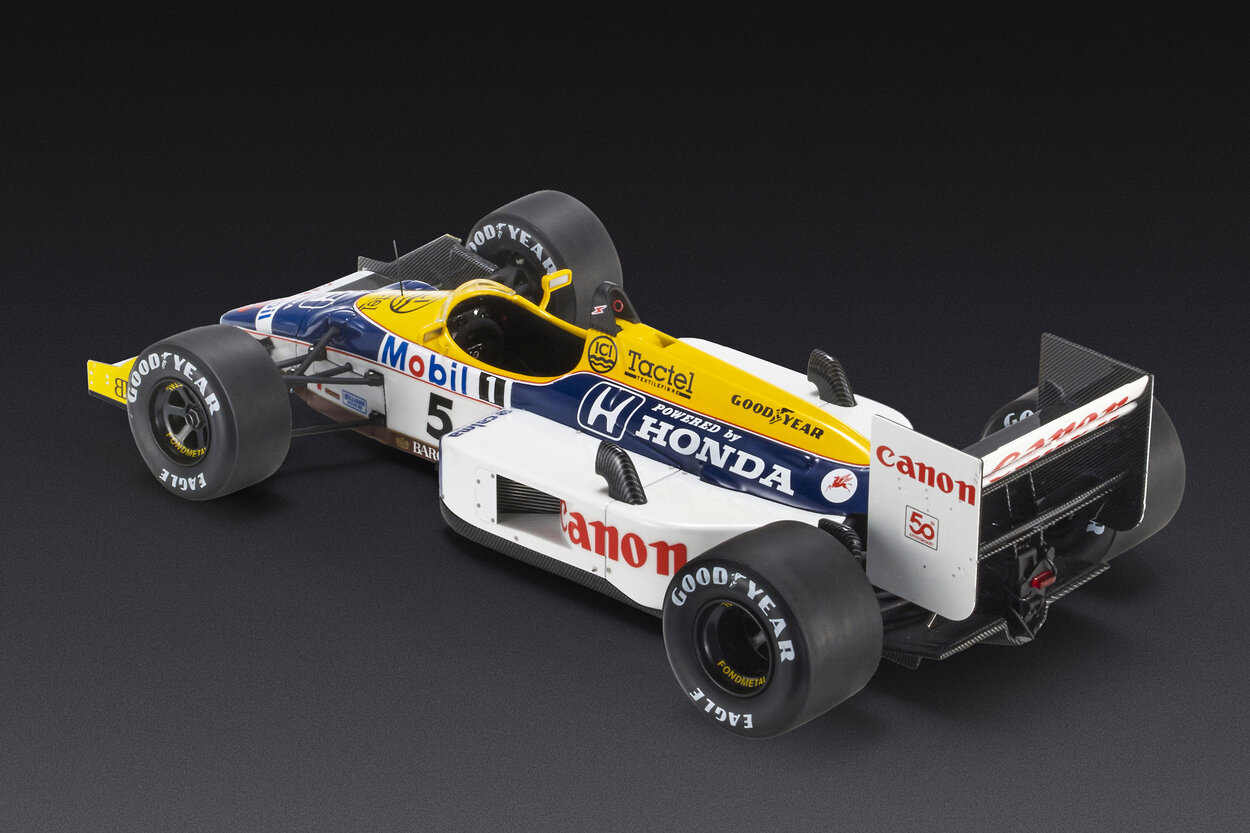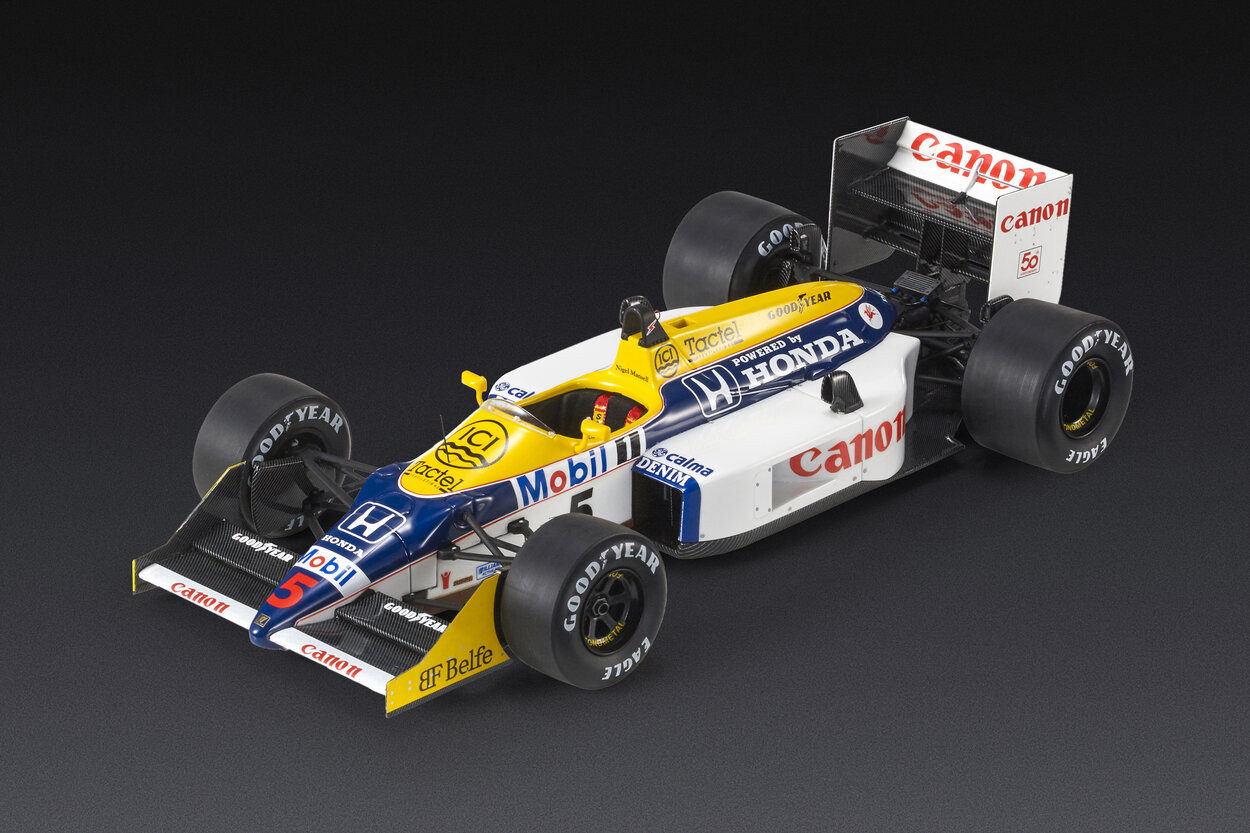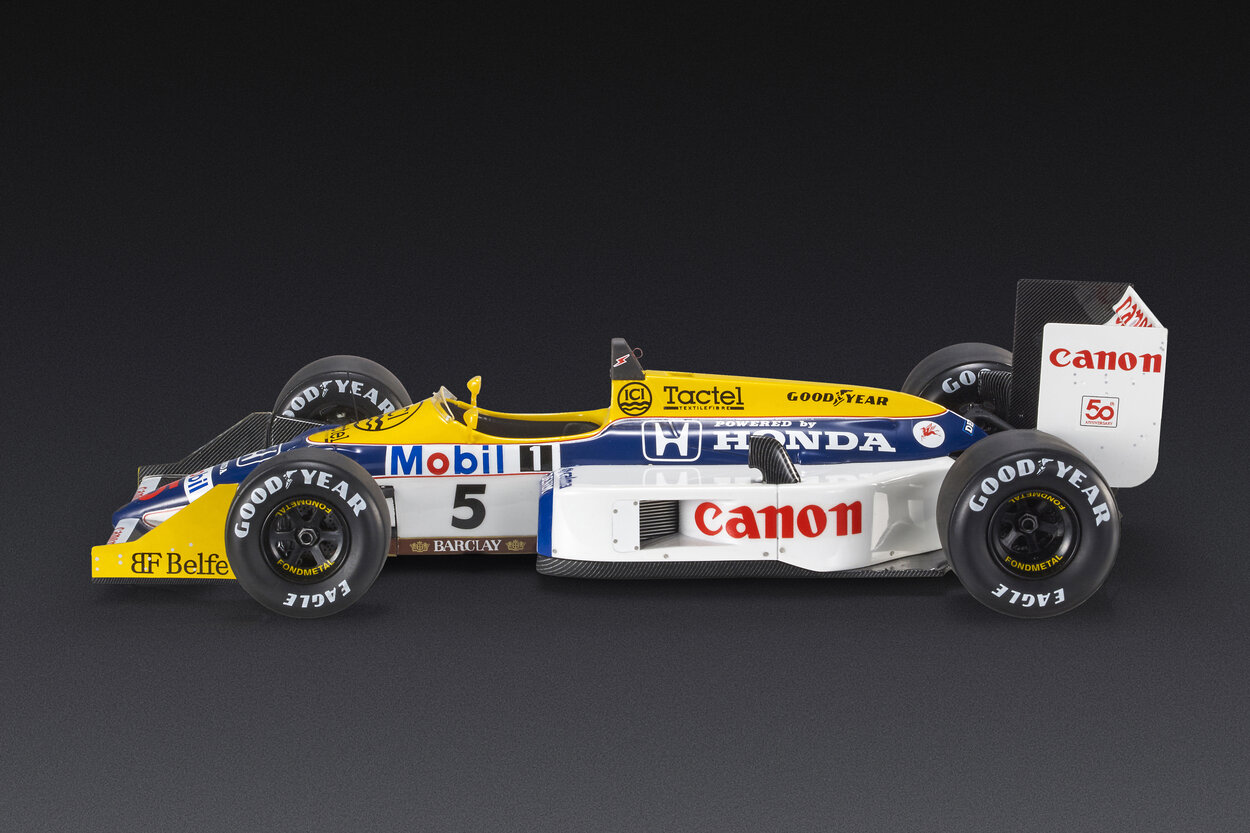Williams FW11B
The FW11B is a car very similar to its predecessor, of which it’s simply a careful and wise evolution. The break with the cars that preceded it actually occurred with the FW11 model, which in 1986 wins the Constructors’ World Championship but narrowly misses out on the Drivers’ title.
The Williams FW11, and consequently the FW11B, are rather traditional cars, but with smoother lines compared to their predecessors, with evident benefits in terms of aerodynamics. During the year, Patrick Head and Frank Dernie experiment with an initial version of Williams’ active suspension, which is entrusted solely to Nelson Piquet. Nigel Mansell, who had experience with this type of suspension when he was with Lotus, wants nothing to do with it. With the active suspension, Piquet will win the Italian Grand Prix at Monza.

Drivers:
Nelson Piquet: 1987 marks the year of Nelson Piquet’s third and final world championship. The Brazilian wins only half of the races won by his teammate – Germany, Hungary, and Italy. However, thanks to a more consistent performance, resulting in seven second places and one third-place finish, he clinches the world championship title at the end of the season. He secures four pole positions during the season, as well as the fastest race laps.
Nigel Mansell: The Lion of England clinches victories in six Grand Prix races: San Marino, France, Britain, Austria, Spain, and Mexico. However, once again, he fails to secure the world championship title. Nigel suffers from four retirements and a loose right rear wheel nut while leading the Hungarian Grand Prix with only six laps to go before the chequered flag, resulting in victory for his teammate. For the second consecutive year, he is the runner-up in the world championship standings. Yet, it’s a bitter consolation.
Our model cars:

The 1.5-liter turbocharged 6-cylinder engine manufactured by Honda powers the FW11B. 1987 is the last year in which Honda supplies its engines to Williams. Despite there being another year left in the contract, in 1988 Honda will exclusively supply McLaren.
The Williams FW11B debuts at the Brazilian Grand Prix opening the 1987 season. It’s one of the most successful cars of all time. Out of a total of 16 races, it wins nine, secures 12 pole positions, and achieves 11 fastest race laps. At the end of the season, it secures the Constructors’ World Championship title and enables Frank Williams’ two drivers to finish first and second in the Drivers’ Championship.

